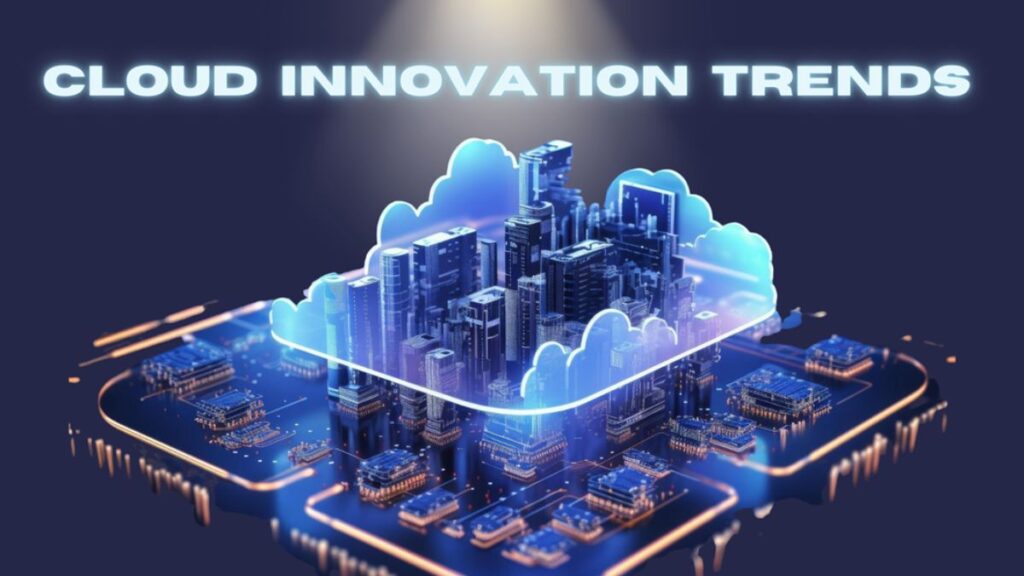Cloud computing has changed significantly over the last ten years and has become an essential foundation for enhancing the capabilities and performance of today’s digital networks. Once, it was a means of data storage that developed into a complex environment that serves as the backbone of automation, artificial intelligence, and large-scale data processing.
Cloud innovation will propel business and technology further in the forthcoming year 2024. Cloud innovation trends have emerged as important success factors for organizations aiming to achieve competitiveness, increase organizational effectiveness, and respond to emerging market demands. In this post, I will also describe the main characteristics of cloud innovations that will define the predominant trends in 2024 and indicate their applications and effects on different sectors.
The Role of Cloud Innovation Trends in 2024
Cloud technology is widely adopted and implemented in almost all sectors of contemporary business operations, ranging from efficient working processes to real-time teamwork. By 2024, the cloud will be not just about where we keep our data; it will be the force behind change and growth in the business world.
Everything relating to artificial intelligence, security, and sustainability is in for amazing innovations, according to the Cloud Innovation Trends 2024. Conventional threats to keeping up with market trends are evident; when organizations do not adapt to these trends, they end up being on the receiving end in a competitive market. Proposing and emphasizing these trends is essential to sustain the technological standing, cater to customers’ needs, and build flexible organizational models. People who successfully leverage those innovations will define the future of the digital world.
The Top Cloud Innovation Trends to Watch in 2024
When we seek more profound to the next level of cloud developments, 2024 is a direction for change. Here are the top cloud innovation trends that are set to make a substantial impact:
1. AI and Machine Learning Integration in the Cloud
Cloud and AI are not remarkable concepts anymore; they are valuable elements that customers widely use, and machine learning is right there among them. Hybrid integration in AI and ML cloud platforms is changing how data is evaluated for the better.
Such technologies improve automation, as organizations can make better decisions based on large volumes of data without intensive human input. Automatic predictive analytics, analytics, AI customer support, and machine learning models powered by the cloud make things smart and automated. In this world of future trends of cloud innovation, the integration of AI and cloud has opened the door of new experimentation and innovation in various business domains.
2. Multi-Cloud and Hybrid Cloud Strategies
One notable trend is the current use of multi-cloud and hybrid cloud settings, to which recent events have contributed. Multi-cloud has become popular, and organizations use many vendors to avoid being locked into a single vendor and take the best out of many cloud systems. Private and public clouds are also being adopted as a hybrid solution, providing the client with flexibility, scalability, and better control.
The availability of organizing workloads across several cloud environments allows firms to enhance reliability and disaster recovery. However, the general multi-cloud management is not entirely devoid of integration and cost issues. Still, multi-cloud and hybrid are emerging as the foundational elements of the cloud innovation trends for 2024.
3. The Rise of Edge Computing
When enterprises demand better efficiency and data processing in real-time, edge computing becomes an important trend in the evolution of the cloud. According to [14], edge computing can be defined as processing data near the sources of the information, not in the cloud. This helps lower latency, and it is among those solutions suitable for applications that call for immediate decisions, like IoT gadgets and automated Units.
Low latency solutions will be more in demand in 2024 as healthcare, manufacturing, and retail sectors rely on edge computing to improve efficiency. Hence, the move to the edge is one of the major future innovation trends in the cloud solutions stream, occasioned by the need to make informed decisions based on data and decentralized processing.
4. Sustainability and Green Cloud Initiatives
As climate change becomes increasingly problematic, sustainability is forcing its way into becoming one of the most important issues that cloud providers in 2024 have to consider. Green cloud projects target decreasing emissions from data centers that are commonly power-hungry. Today’s major Cloud IaaS providers, such as AWS, Microsoft Azure, and Google Cloud, are procuring renewable energy sources to support their data centers and adopting energy efficiency measures.
The commonly discussed cost savings in utilizing the cloud, cutting cooling costs, and other efficiency gains are also progressively moving toward environmental conservation. This focus on environmental impact is one of the more significant future trends in developing cloud solutions, where businesses emphasize sustainability as a global goal.
5. Serverless Computing and Automation
Concurrently, serverless computing revolutionizes how developers create and release applications since the underlying infrastructure is not managed. The parameters of computing resources allow the cloud provider to manage them independently. In a serverless environment, developers can write code without worrying about the infrastructure underlying it. Although this saves time, it also greatly lowers the operation’s expenses.
It is also an essential component of serverless architectures in which almost all tasks are performed automatically and efficiently to reduce human impact. The cloud services industry is experiencing a shift involving computing as a service and serverless automation to enhance its supply. More so, exploring serverless infrastructure will continue to contribute significantly toward adopting new advances in the cloud in 2024.
6. Security Innovations in Cloud Computing
Cloud services are rapidly expanding, and security has been one of the most important issues in recent years. Looking forward to 2024, it is paramount that advancements in security mechanisms in cloud computing become common. Advanced threat identification through AI, better encryption, and zero-trust security frameworks are aiding organizations in protecting their information in complex cloud deployments.
These innovations bear with the increasing complexity of cyber threats so that cloud services are secure and compliant with regulations. Of the future trends in innovation in cloud computing, a more robust security system in cloud services is crucial to maintaining their credibility.
7. The Expansion of 5G and Its Impact on Cloud Services
Thus, implementing 5G networks will mostly affect cloud computing in segments such as edge computing and the Internet of Things, using much higher speed and less latency than previous generations.
The transport, health, and entertainment sectors will be some of the significant beneficiaries of 5G cloud services, which require high bandwidth. This expansion will allow more people to use cloud-based applications while establishing a foundation for new advancements in Cloud Services.
Conclusion
As the calendar countdown to 2024 continues, companies are advised to prepare for the new wave of cloud innovation trends that define the future. Whether AI integration and edge computing, sustainability, or 5G growth, the cloud continues to advance and move into new frontiers, with these trends still opening up opportunities for new expansion.
Keeping abreast of these cloud innovation trends is essential for firms that want to stay relevant in the rapidly growing technological environment. Cloud services play a critical role in this innovation, providing the elasticity, protection, and expansion factors required to succeed in the next era of cloud computing. As these trends evolve, they will no doubt reshape how industries use the cloud to address new challenges and opportunities on the horizon.
Happy Clouding!!
=========================================================================
Author Bio: Chandresh Patel is a CEO, Agile coach, and founder of Bacancy Technology. His truly entrepreneurial spirit, skillful expertise, and extensive knowledge of Agile software development services have helped the organization achieve new heights of success. Chandresh is leading the organization into global markets systematically, innovatively, and collaboratively to fulfill custom software development needs and provide optimum quality.







